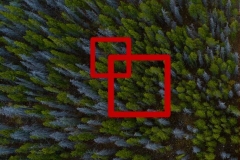The objective of the feasibility study “Rheticus® Forest Carbon Offset” is to fulfil the need for a reliability assessment for emissions offsetting investments for companies' sustainability strategies.
Private-market actors (e.g. Oil & Gas and energy companies) need to compensate for CO2 emissions through reliable projects; consultancy companies need reliable information on offsetting investments to design private companies’ sustainability strategies effectively; investment funds need a risk assessment to address investments to well-performing and stable bonds over time.
The need for a reliability indicator of credits from forest conservation projects exploded in January 2023, when The Guardian published the results of an investigation stating that more than 90% of rainforest offset credits from one of the biggest certifiers are likely to be “phantom credits” and do not represent genuine carbon reductions (Greenfield, P. (2023) Revealed: More than 90% of rainforest carbon offsets by biggest certifier are worthless, analysis shows, The Guardian, January 18th, 2023).
The “Rheticus® Forest Carbon Offset” study aims to assess the feasibility of a service providing a synthetic, fully automated rating of offsetting projects through objective geospatial data and methods based on Earth Observation technologies.
Users and their needs
 The study “Rheticus® Forest Carbon Offset” addresses several customer segments:
The study “Rheticus® Forest Carbon Offset” addresses several customer segments:
private-market users: private companies emitting CO2 that consider REDD+ as part of their offsetting strategy, must be sure that projects they are investing in will be generating credits and could actively help with compensating such emissions. The service could actively respond to this requirement by measuring the correct forest carbon stocks.
consultancy firms: by including environmental risk factors in the forest area analysis, customers can benefit from a considerable reduction of intrinsic uncertainty typical of forestry investments. When customers have to manage more than one REDD+ project, they should be able to classify projects by the credits generated, so that a project ranking from the lowest risk (highest credits rate) to the highest risk (lowest credits rate) can be the primary outcome.
investment funds: thanks to correct and reliable carbon stocks estimations, the derived carbon credits could be safely commercialised along the value chain, so that investment funds/equity could address investments to well-performing and stable bonds over time.
Targeted customers can be based worldwide.
Service/ system concept
The strength of the “Rheticus® Forest Carbon Offset” service is that it aims to simplify users’ demand for an “Investment VS. No Investment” decision on forest carbon offset investment. This is done by exploiting the advantages of Earth Observation data and geospatial methods.
The user provides essential input information about the offsetting project, like its extension and geographical location. The processing system collects relevant global, objective, and validated geospatial data related to the area of interest of the candidate offsetting project (global land cover layers, global forest biomass layers, and other ancillary Earth Observation layers). Then, geospatial analysis is done to assess the extension of the forest area, its density, and its associated biomass through time, producing a set of indicators. The indicators are weighted and combined to get a synthetic value representing the reliability score of the offsetting investment. In the end, a synthetic report is generated and delivered to the user.
The project team aims to integrate the system as a new service into the Rheticus® platform, an automatic, cloud-based, geoinformation service platform developed by Planetek Italia.
Space Added Value
Non-commercial Satellite Earth Observation space assets and derived data are used to provide the service, such as Sentinel-2, Copernicus Global Land Cover, ESA World Cover.
These space assets can provide significant added value to a service that assesses the reliability of carbon-offsetting investments, for example:
accuracy and transparency: Earth observation data and derived maps offer high-resolution and accurate measurements of land cover and forest biomass. In particular, accuracy is crucial for assessing the true carbon sequestration potential of a given area, ensuring that carbon offsetting claims are based on reliable data.
consistency and comparability: consistent and comparable assessments across different regions and periods are allowed. Consistency, in particular, is essential for evaluating the long-term effectiveness of carbon offset projects.
continuous updates: sometimes information regarding natural and anthropogenic pressures on an area can be outdated, while Earth Observation can provide continuously updated information, which is crucial for assessing how they influenced forest extension or degradation through time.
On going activities
Potential customers and users from the Oil & Gas sector, the consultancy sector, and the financial sector have been contacted to improve customer identification and the definition of the value proposition of Rheticus® Forest Carbon Offset.
In parallel, the technical feasibility of the proposed service is currently assessed, by identifying critical technical and operational elements. A prototype of the report for the user containing the reliability score of the project and other useful information has been realised.
Planetek Italia also interacted with other stakeholders – such as certifiers of voluntary carbon offsets – and collected information from potential customers and users about pricing and business model viability to assess the commercial viability of the service.
All the elements collected contribute to elaborate a proof of concept, in which the critical assumptions about the customer desirability, technical feasibility, and commercial viability of the operational business are tested.
Prime contractor of the feasibility study is Planetek Italia.
Learn more and discover all updates on
https://business.esa.int/projects/rheticusr-forest-carbon-offset






